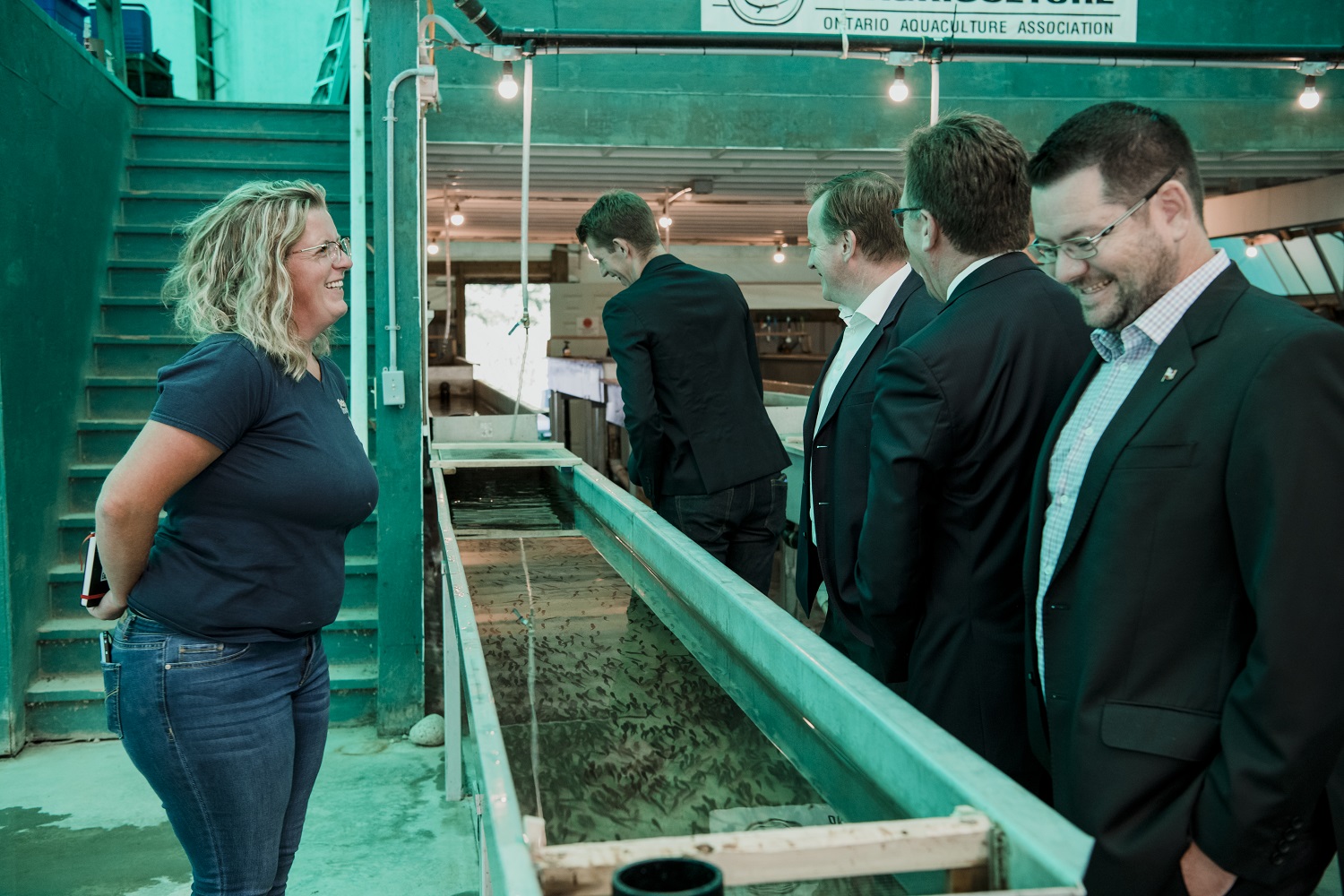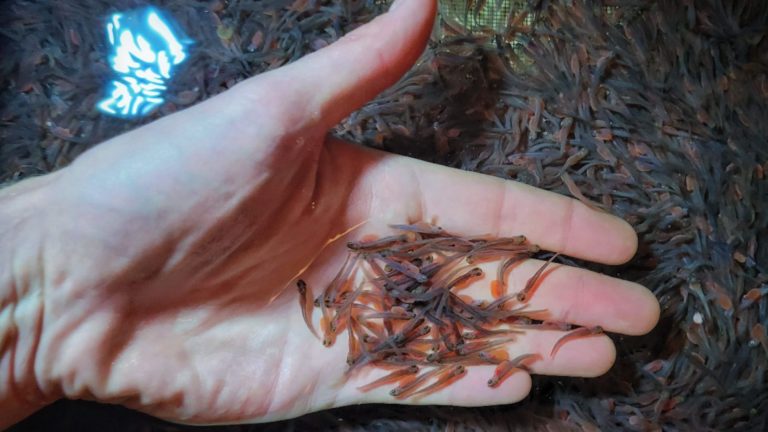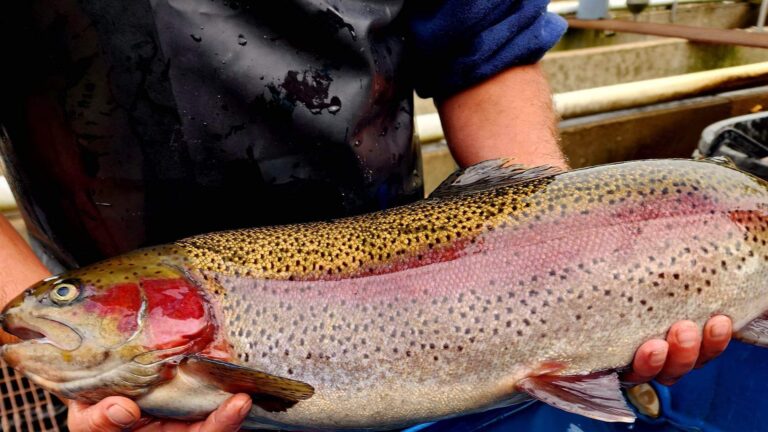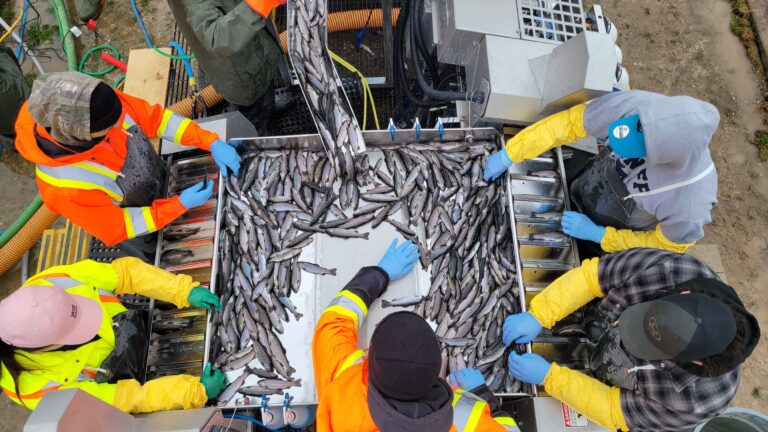
One of our favourite past-times on the farm is giving tours in Ontario, Canada. It gives us an opporTUNAty to show you how a fish farm really works, and dispel some misconceptions along the way.
Here are the top 6 questions we get on almost every tour.
1. What do your fish eat?
Trout, salmon and char are top-level predators in the wild, which means they need a lot of high-quality protein. They can’t thrive on corn, soy or wheat like many other animals we farm. We source that protein from as many reclaimed sources as possible, like fish trimmings.
2. Does your farm have an environmental impact?
Absolutely, but that’s not a bad thing! The water from our Canadian farms eventually makes its way into Lake Huron. Several studies have shown that these nutrients in Lake Huron actually increase wild fish populations.
3. Are wild fish better than farmed?
We don’t find that question useful because there are plenty of well-managed wild fish stocks, and lots that aren’t sustainable or safe to eat. Just like there are many well-run fish farms, and others that aren’t.
We recommend looking for eco-certifications like Best Aquaculture Practices, as they mean a third-party auditor has had to directly see if the fish is eco-friendly. Buying local and Canadian also helps because it keeps you away from a complex international supply chains known to mislabel and hide untrustworthy practices.
4. Do you give the fish antibiotics, steroids or hormones?
We never use hormones or steroids on the farm, and we raise our fish free of antibiotics and to the organic standard.
See why we don’t offer organic fish
5. Are farmed fish dyed orange?
We don’t add any dyes to colour the fillets. That bright orange you see in wild and farmed fish comes from astaxanthin. It’s an antioxidant you can buy at the health food store, and it helps the fish uptake their vitamin K. The orange is just a side effect.
6. Does fish farming use more wild fish than it produces?
This may have been true 20 years ago, but not anymore thanks to advances in feed science and more sustainable ingredients. On our farm, it takes 0.4 pounds of other fish to grow a pound of trout or salmon, and shrinking. And that isn’t all coming from wild fish. We use reclaimed trimmings from other fish species as much as possible.
BONUS: How do you cook it?
Our mother has been cooking fish for guests for other 30 years, and she gives you all her easiest tips on our website. Plus we have dozens of recipes so dinner time never gets boring!


